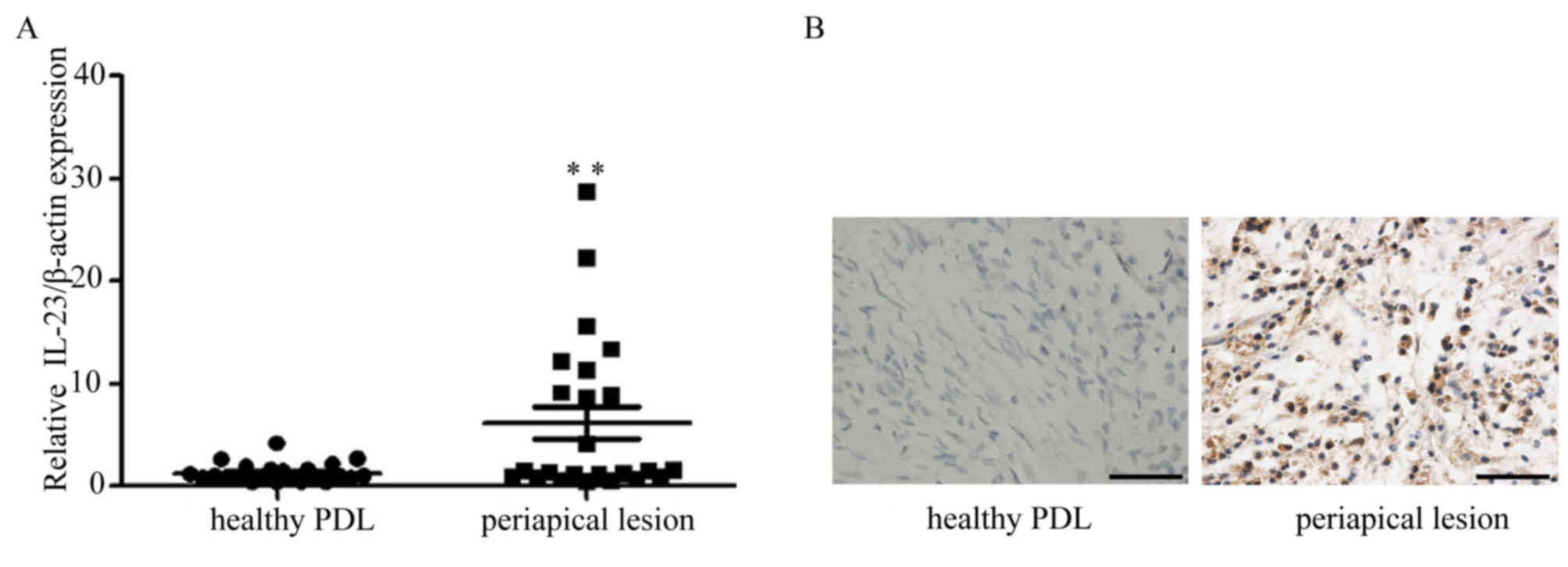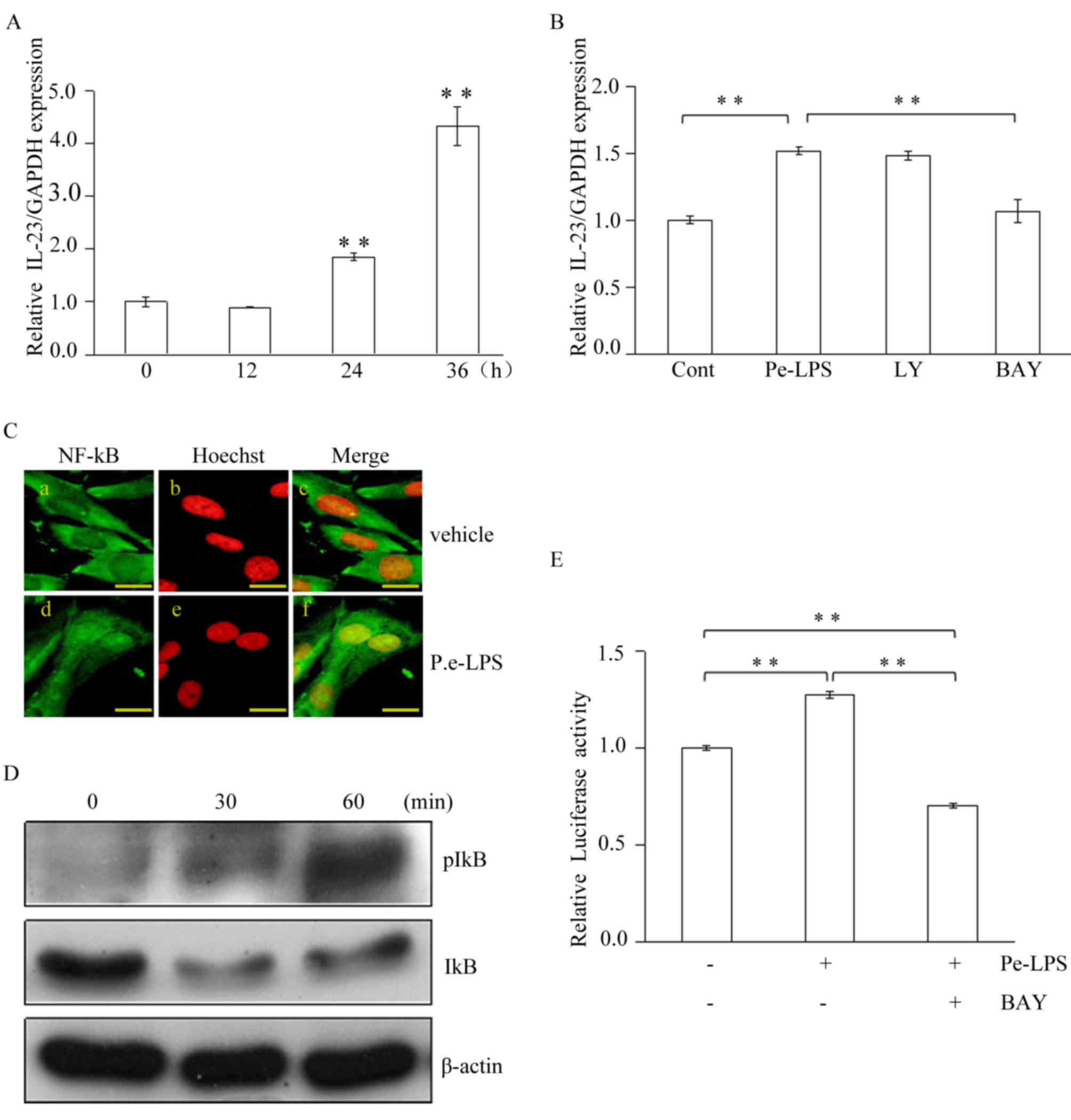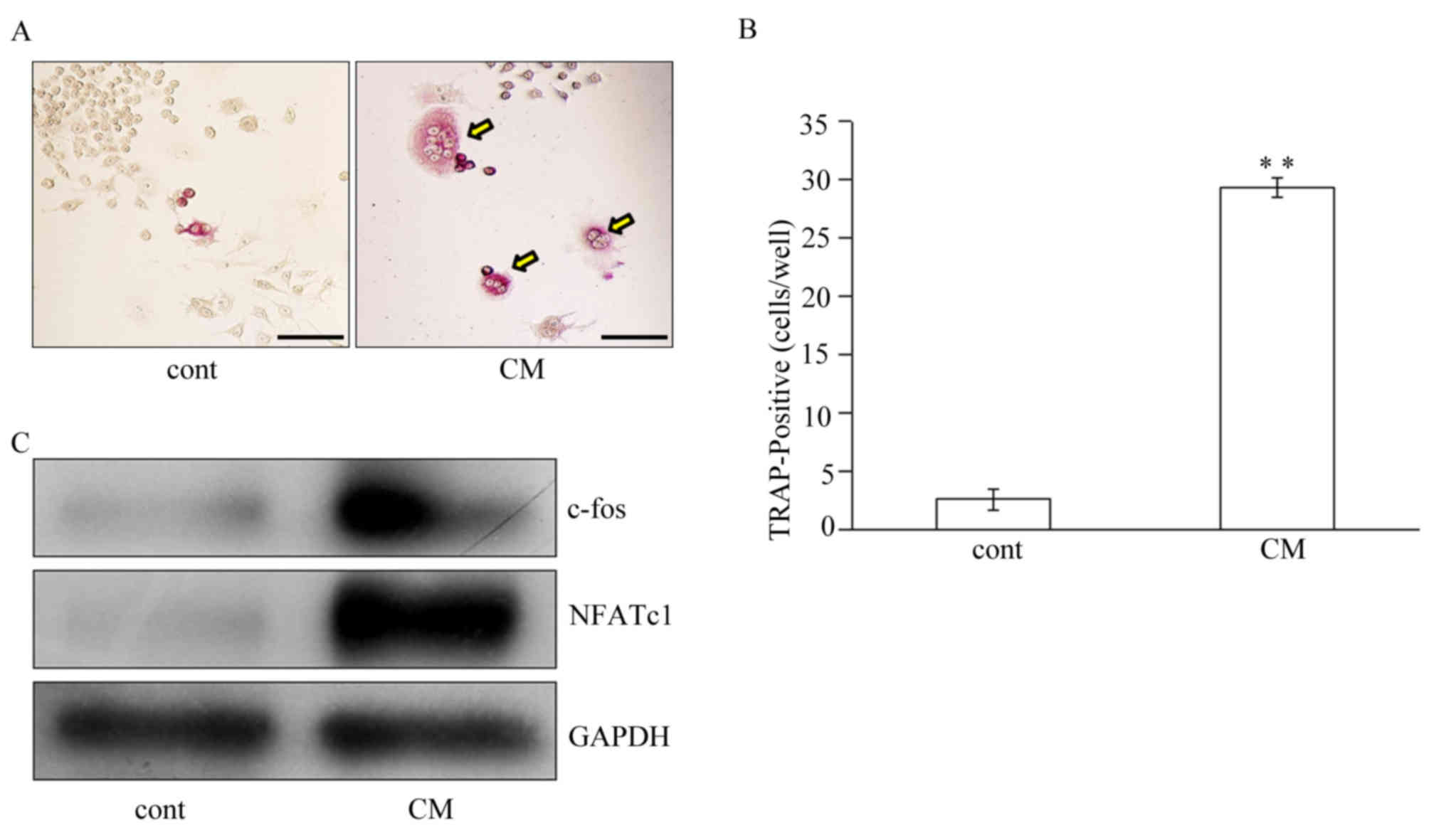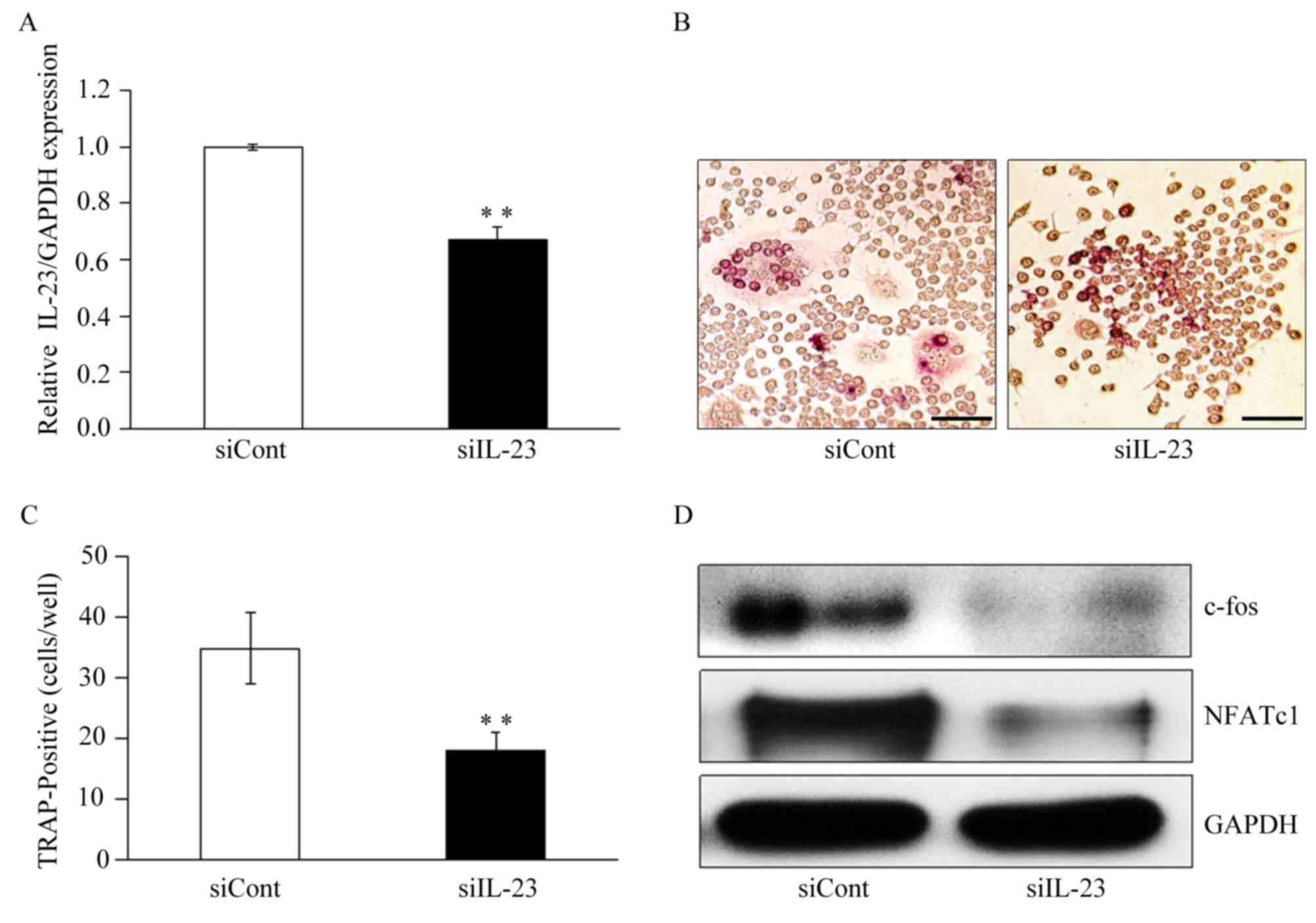|
1
|
Wittgow WC Jr and Sabiston CB Jr:
Microorganisms from pulpal chambers of intact teeth with necrotic
pulps. J Endod. 1:168–171. 1975. View Article : Google Scholar : PubMed/NCBI
|
|
2
|
Assed S, Ito IY, Leonardo MR, Silva LA and
Lopatin DE: Anaerobic microorganisms in root canals of human teeth
with chronic apical periodontitis detected by indirect
immunofluorescence. Endod Dent Traumatol. 12:66–69. 1996.
View Article : Google Scholar : PubMed/NCBI
|
|
3
|
Tomazinho LF and Avila-Campos MJ:
Detection of Porphyromonas gingivalisPorphyromonas endodontalis,
Prevotella intermedia, and Prevotella nigrescens in chronic
endodontic infection. Oral Surg Oral Med Oral Pathol Oral Radiol
Endod. 103:285–288. 2007. View Article : Google Scholar : PubMed/NCBI
|
|
4
|
Bedran TB Lombardo, Marcantonio RA, Neto R
Spin, Mayer MP Alves, Grenier D, Spolidorio LC and Spolidorio DP:
Porphyromonas endodontalis in chronic periodontitis: A clinical and
microbiological cross-sectional study. J Oral Microbiol.
4:2012.
|
|
5
|
Yang D, Li R, Qiu LH and Li C: Effects of
lipopolysaccharides extracted from Porphyromonas endodontalis on
the expression of IL-1beta mRNA and IL-6 mRNA in osteoblasts.
Shanghai Kou Qiang Yi Xue. 18:194–197. 2009.(In Chinese).
PubMed/NCBI
|
|
6
|
Tang Y, Sun F, Li X, Zhou Y, Yin S and
Zhou X: Porphyromonas endodontalis lipopolysaccharides induce RANKL
by mouse osteoblast in a way different from that of Escherichia
coli lipopolysaccharide. J Endod. 37:1653–1658. 2011. View Article : Google Scholar : PubMed/NCBI
|
|
7
|
Hong L, Hai J, Yan-Yan H, Shenghui Y and
Benxiang H: Colonization of Porphyromonas endodontalis in primary
and secondary endodontic infections. Hua Xi Kou Qiang Yi Xue Za
Zhi. 33:88–92. 2015.(In Chinese). PubMed/NCBI
|
|
8
|
Guo J, Yang D, Okamura H, Teramachi J,
Ochiai K, Qiu L and Haneji T: Calcium hydroxide suppresses
Porphyromonas endodontalis lipopolysaccharide-induced bone
destruction. J Dent Res. 93:508–513. 2014. View Article : Google Scholar : PubMed/NCBI
|
|
9
|
Yu Y, Yang D, Qiu L, Okamura H, Guo J and
Haneji T: Tumor necrosis factor-α induces interleukin-34 expression
through nuclear factor-κB activation in MC3T3-E1 osteoblastic
cells. Mol Med Rep. 10:1371–1376. 2014.PubMed/NCBI
|
|
10
|
Nair PN and Schmid-Meier E: An apical
granuloma with epithelial integument. Oral Surg Oral Med Oral
Pathol. 62:698–703. 1986. View Article : Google Scholar : PubMed/NCBI
|
|
11
|
Márton IJ and Kiss C: Protective and
destructive immune reactions in apical periodontitis. Oral
Microbiol Immunol. 15:139–150. 2000. View Article : Google Scholar : PubMed/NCBI
|
|
12
|
Ogasawara T, Yoshimine Y, Kiyoshima T,
Kobayashi I, Matsuo K, Akamine A and Sakai H: In situ expression of
RANKL, RANK, osteoprotegerin and cytokines in osteoclasts of rat
periodontal tissue. J Periodontal Res. 39:42–49. 2004. View Article : Google Scholar : PubMed/NCBI
|
|
13
|
Benatti BB, Silvério KG, Casati MZ, Sallum
EA and Nociti FH Jr: Inflammatory and bone-related genes are
modulated by aging in human periodontal ligament cells. Cytokine.
46:176–181. 2009. View Article : Google Scholar : PubMed/NCBI
|
|
14
|
Oppmann B, Lesley R, Blom B, Timans JC, Xu
Y, Hunte B, Vega F, Yu N, Wang J, Singh K, et al: Novel p19 protein
engages IL-12p40 to form a cytokine, IL-23, with biological
activities similar as well as distinct from IL-12. Immunity.
13:715–725. 2000. View Article : Google Scholar : PubMed/NCBI
|
|
15
|
Murphy CA, Langrish CL, Chen Y,
Blumenschein W, McClanahan T, Kastelein RA, Sedgwick JD and Cua DJ:
Divergent pro- and antiinflammatory roles for IL-23 and IL-12 in
joint autoimmune inflammation. J Exp Med. 198:1951–1957. 2003.
View Article : Google Scholar : PubMed/NCBI
|
|
16
|
Teng MW, Bowman EP, McElwee JJ, Smyth MJ,
Casanova JL, Cooper AM and Cua DJ: IL-12 and IL-23 cytokines: From
discovery to targeted therapies for immune-mediated inflammatory
diseases. Nat Med. 21:719–729. 2015. View
Article : Google Scholar : PubMed/NCBI
|
|
17
|
Lester SR, Bain JL, Johnson RB and Serio
FG: Gingival concentrations of interleukin-23 and −17 at healthy
sites and at sites of clinical attachment loss. J Periodontol.
78:1545–1550. 2007. View Article : Google Scholar : PubMed/NCBI
|
|
18
|
Ohyama H, Kato-Kogoe N, Kuhara A,
Nishimura F, Nakasho K, Yamanegi K, Yamada N, Hata M, Yamane J and
Terada N: The involvement of IL-23 and the Th17 pathway in
periodontitis. J Dent Res. 88:633–638. 2009. View Article : Google Scholar : PubMed/NCBI
|
|
19
|
Cifcibasi E, Koyuncuoglu C, Ciblak M,
Badur S, Kasali K, Firatli E and Cintan S: Evaluation of Local and
Systemic Levels of Interleukin-17, Interleukin-23, and
myeloperoxidase in response to periodontal therapy in patients with
generalized aggressive periodontitis. Inflammation. 38:1959–1968.
2015. View Article : Google Scholar : PubMed/NCBI
|
|
20
|
Zhu L, Wu Y, Wei H, Xing X, Zhan N, Xiong
H and Peng B: IL-17R activation of human periodontal ligament
fibroblasts induces IL-23 p19 production: Differential involvement
of NF-kB versus JNK/AP-1 pathways. Mol Immunol. 48:647–656. 2011.
View Article : Google Scholar : PubMed/NCBI
|
|
21
|
Park YD, Kim YS, Jung YM, Lee SI, Lee YM,
Bang JB and Kim EC: Porphyromonas gingivalis lipopolysaccharide
regulates interleukin (IL)-17 and IL-23 expression via SIRT1
modulation in human periodontal ligament cells. Cytokine.
60:284–293. 2012. View Article : Google Scholar : PubMed/NCBI
|
|
22
|
Kang YK and Zhang MC: IL-23 promotes
osteoclastogenesis in osteoblast-osteoclast co-culture system.
Genet Mol Res. 13:4673–4679. 2014. View Article : Google Scholar : PubMed/NCBI
|
|
23
|
Livak KJ and Schmittgen TD: Analysis of
relative gene expression data using real-time quantitative PCR and
the 2(−Delta Delta C(T)) method. Methods. 25:402–408. 2001.
View Article : Google Scholar : PubMed/NCBI
|
|
24
|
Hasegawa T, Chosa N, Asakawa T, Yoshimura
Y, Ishisaki A and Tanaka M: Establishment of immortalized human
periodontal ligament cells derived from deciduous teeth. Int J Mol
Med. 26:701–705. 2010. View Article : Google Scholar : PubMed/NCBI
|
|
25
|
Silva TA, Garlet GP, Fukada SY, Silva JS
and Cunha FQ: Chemokines in oral inflammatory diseases: Apical
periodontitis and periodontal disease. J Dent Res. 86:306–319.
2007. View Article : Google Scholar : PubMed/NCBI
|
|
26
|
Stashenko P, Teles R and D'Souza R:
Periapical inflammatory responses and their modulation. Crit Rev
Oral Biol Med. 9:498–521. 1998. View Article : Google Scholar : PubMed/NCBI
|
|
27
|
Himani GS, Prabhuji ML and Karthikeyan BV:
Gingival crevicular fluid and interleukin-23 concentration in
systemically healthy subjects: Their relationship in periodontal
health and disease. J Periodontal Res. 49:237–245. 2014. View Article : Google Scholar : PubMed/NCBI
|
|
28
|
El-Awady AR, Messer RL, Gamal AY, Sharawy
MM, Wenger KH and Lapp CA: Periodontal ligament fibroblasts sustain
destructive immune modulators of chronic periodontitis. J
Periodontol. 81:1324–1335. 2010. View Article : Google Scholar : PubMed/NCBI
|
|
29
|
Zhu L, Wu Y, Wei H, Yang S, Zhan N, Xing X
and Peng B: Up-regulation of IL-23 p19 expression in human
periodontal ligament fibroblasts by IL-1β via concurrent activation
of the NF-kB and MAPKs/AP-1 pathways. Cytokine. 60:171–178. 2012.
View Article : Google Scholar : PubMed/NCBI
|
|
30
|
Tang C, Chen S, Qian H and Huang W:
Interleukin-23: As a drug target for autoimmune inflammatory
diseases. Immunology. 135:112–124. 2012. View Article : Google Scholar : PubMed/NCBI
|
|
31
|
Shimozato O, Ugai S, Chiyo M, Takenobu H,
Nagakawa H, Wada A, Kawamura K, Yamamoto H and Tagawa M: The
secreted form of the p40 subunit of interleukin (IL)-12 inhibits
IL-23 functions and abrogates IL-23-mediated antitumour effects.
Immunology. 117:22–28. 2006. View Article : Google Scholar : PubMed/NCBI
|
|
32
|
Yu Y, Qiu L, Guo J, Yang D, Qu L, Yu J,
Zhan F, Xue M and Zhong M: TRIB3 mediates the expression of Wnt5a
and activation of nuclear factor-kB in Porphyromonas endodontalis
lipopolysaccharide-treated osteoblasts. Mol Oral Microbiol.
30:295–306. 2015. View Article : Google Scholar : PubMed/NCBI
|
|
33
|
Jia G, Xue M, Li R, Lv Y and Qiu LH:
Effects of lipopolysaccharides from various Porphyromonas on the
expression of CD14 and TLRs in mouse osteoblast. Shanghai Kou Qiang
Yi Xue. 20:597–602. 2011.(In Chinese). PubMed/NCBI
|
|
34
|
Lv Y, Jia G, Qiu LH, Bao MR, Yu YQ and Guo
Y: Effect of lipopolysaccharides extracted from Porphyromonas
endodontalis on the expression of p38 and ERK1/2 in osteoblast.
Shanghai Kou Qiang Yi Xue. 21:389–392. 2012.(In Chinese).
PubMed/NCBI
|
|
35
|
Hu Y, Xiong H and Peng B: Expression of a
cytokine, interleukin-23, in experimental periapical lesions. Int
Endod J. 46:896–903. 2013. View Article : Google Scholar : PubMed/NCBI
|
|
36
|
Chen L, Wei XQ, Evans B, Jiang W and
Aeschlimann D: IL-23 promotes osteoclast formation by up-regulation
of receptor activator of NF-kappaB (RANK) expression in myeloid
precursor cells. Eur J Immunol. 38:2845–2854. 2008. View Article : Google Scholar : PubMed/NCBI
|
|
37
|
Kamiya S, Nakamura C, Fukawa T, Ono K,
Ohwaki T, Yoshimoto T and Wada S: Effects of IL-23 and IL-27 on
osteoblasts and osteoclasts: Inhibitory effects on osteoclast
differentiation. J Bone Miner Metab. 25:277–285. 2007. View Article : Google Scholar : PubMed/NCBI
|


















